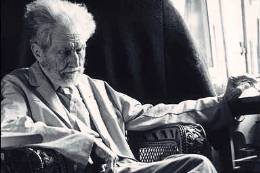9 February 1999
Alzheimer's Impairs Motion Perception

Matthew Rizzo, UI professor of neurology, has found that Alzheimer's disease impairs individuals' ability to perceive shapes defined by movement cues, such as those encountered when people are in motion.
"These are the kinds of deficits that have the potential to increase the risks of crashes, stumbles and falls," Rizzo said.
Alzheimer's disease is the most prevalent cause of abnormal cognitive decline in older adults and commonly affects visual function. About 10 years ago, researchers began theorizing that special cells in the retina of the eyes of Alzheimer's patients dropped out of the retina, causing motion-processing deficiencies. If this were the only explanation, then all types of movement processing would be affected to a similar extent. Rizzo wanted to find out if the problem was more complex - occurring at a higher level in the brain, which would mean that the disease did not affect all types of specialized stimuli to the same degree.
"Perception of movement - just moving in a direction - is very different than the perception of shapes defined by movement and perception of moving shapes," Rizzo said. "Those seem like small distinctions, but they are really fairly big distinctions in terms of what is being processed and where it is being processed in the brain."
The UI investigators found that perception of shapes defined by movement cues was especially impaired in Alzheimer's disease patients - even for those with mild to moderate forms of the disease. However, the study showed that the disease did not significantly affect simpler types of motion, such as motion direction discrimination - seeing flow in one direction or another - and perceiving moving shapes, Rizzo said.
Rizzo tested 63 adults - 41 with mild to moderate Alzheimer's disease and 22 without dementia.
In the test concerning perception of shapes defined by movement cues, Rizzo presented the subjects with a projection of many spatially random dots. He then attached specific motion vectors to some dots (the signal dots) and random motions to the other (the background "noise"). Once the movement started, the signal dots took on the shape of either a sphere or a cube rotating in different directions. To "see" the shapes, one's brain must have been able to combine the different movements of the many tiny signal dots into a coherent whole and disregard the "noise." Otherwise, a person just sees "snow" similar to that found on a malfunctioning TV screen.
The Alzheimer's patients were abnormally sensitive to the presence of background noise. To see the shapes, the participants with Alzheimer's disease required more than twice as much motion signal as the control group - 20.4 per cent as compared to 9.3 per cent.
"The results, which show impairments of structure from motion, are relevant to the understanding of the pathology of neural systems in patients with Alzheimer's disease and the progressive impact on the daily activities of affected people," Rizzo said.
